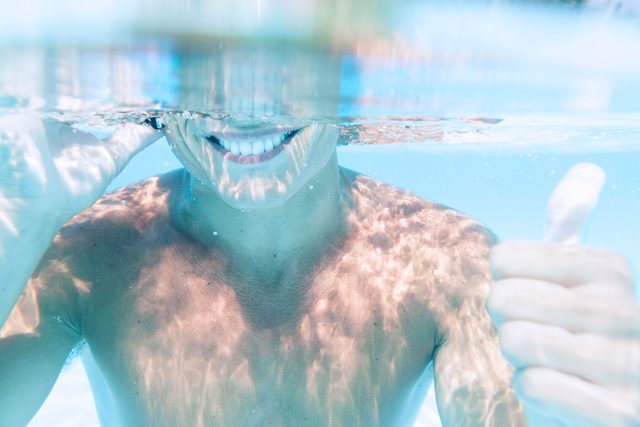How to Turn Your Phone Into an Underwater Camera Before Your Next Vacation
Updated: Nov. 28, 2022
Protect your device and capture stunning shots in six simple steps.

1. Explore equipment options
Before beginning any underwater photography endeavor, you’ll need a waterproof case or bag to keep your phone dry. Look for one with a free or opt-in water damage warranty. That way, you won’t be down the cost of a new phone should the case malfunction. Reliable options range in price from $30 to $150; Mashable recommends Lifeproof, Drycase, and RainBallet.
2. Experiment in a swimming pool
While it might not be the most exotic location, an outdoor pool is one of the best places to capture underwater shots. The clear water allows for better lighting and the controlled environment limits the risk to your safety. Additionally, if your waterproofing equipment fails, freshwater is easier on smartphones than saltwater. Check out these stunning wave photos you won’t believe are real.
3. Consider your surroundings
If you decide to shoot in an open water environment, don’t allow your camera to distract you too much. Read up on local weather and riptide advisories, and be aware of nearby swimmers and wildlife.
4. Get the right lighting. Schedule your photo shoot for mid-afternoon when the sun is the brightest and position yourself so that its rays come from behind you. Shoot close to the surface for better lighting. Position yourself beneath your subject to capture the water’s reflection, or experiment with shots that are half underwater and half above. You’ll get the best of both worlds.
5. Utilize the volume + and – buttons. As soon as your phone goes underwater, its touch screen will be useless. Open the camera app before your dive and take photos by clicking the + and – volume buttons on the side of the device. To take photos in bursts, simply hold the button down.
6. Try a close up. Get as close to your subject as possible. Six-feet back is about as far as you can get without compromising quality. Don’t be afraid to have fun with it. Try blowing bubbles or taking shots with a moving subject.
